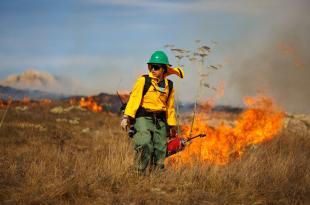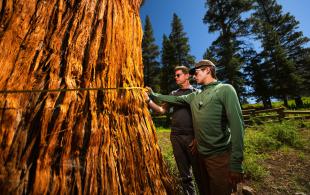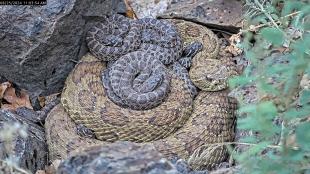Bay Area Bird Songs Changed Significantly During Pandemic — And This Cal Poly Study Finds Out Why
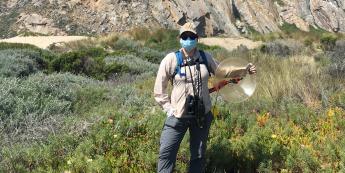
When the roads emptied of traffic in March and April because of the COVID-19 pandemic, Bay Area residents reported hearing more birds.
They were halfway right.
Jennifer Phillips, a researcher at Cal Poly, and Elizabeth Derryberry, a professor at the University of Tennessee in Knoxville, collaborated with a team of fellow ecologists to evaluate whether and how songbirds responded to the quieter environment with much less traffic as the pandemic kept most people home. The researchers’ findings, recently published in the journal Science, were based on a comparison of soundscapes and songs of the white-crowned sparrow recorded across the San Francisco Bay Area prior to and during the recent statewide shutdown.
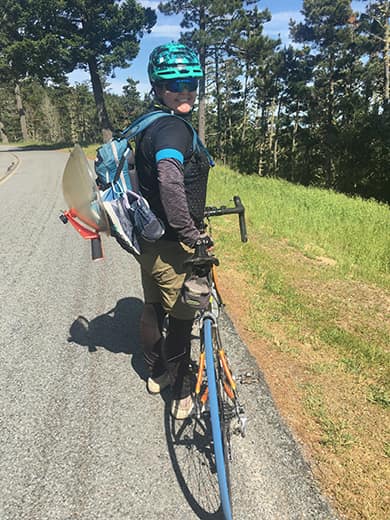
“When I saw photos of an empty Golden Gate Bridge, it struck me just how little traffic there was,” said Derryberry, lead author of the study. “I realized we were in a unique position to look at how changes in human behavior might affect wildlife and what the noise reduction might mean for the songbird we study.”
As a graduate student from 2013-2017, Phillips studied the song of the white-crowned sparrow in the Bay Area. Now a postdoctoral researcher at Cal Poly, she returned to her former study sites in April and May 2020 to record noise and song samples from urban and rural sites surrounding San Francisco and Richmond, California. She measured how loud the sparrows were singing and how far away from her they were.
“I was probably a sight to see for the few locals out walking, covered in equipment and frozen awkwardly to get the perfect angle recording the bird,” Phillips said.
The research team compared these samples to those collected in the same areas from 2012-2020 by Phillips, Derryberry and David Luther, an assistant professor of biology at George Mason University in Fairfax, Virginia. During the statewide shutdown, the team observed no difference in noise levels between urban San Francisco and rural Marin County; lower noise levels in the city were likely the result of less traffic. For example, traffic on the Golden Gate Bridge returned to levels not seen since 1954.
“The rush hour roar was more like a gentle, sporadic purr,” Phillips said. “Usually, the Presidio is full of visiting tourists coming to see the Golden Gate Bridge, often in large groups. This season, only a few local individuals or couples were out for morning walks or bike rides. It was quite peaceful.”
The dramatic reduction of vehicular traffic had erased a half-century of urban noise pollution. The researchers found that the birds responded by producing softer songs that could travel over a larger distance, unimpeded by noise. The urban songs also became “sexier” in terms of vocal performance —meaning birds sang a wider range of notes, or bandwidth, in their song during the shutdown.
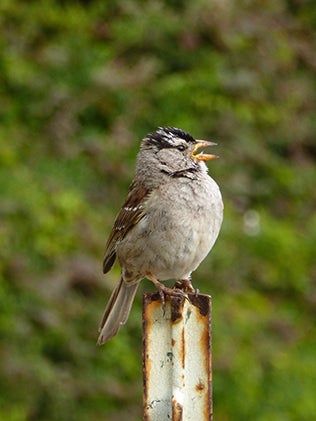
According to Phillips, prior to the shutdown, bird territories in San Francisco had nearly three times more human noise than in rural western Marin County — but during the shutdown, people could hear effectively four times more birds than usual.
“When the birds don’t have to compete with loud background noise, they can essentially sing more quietly but still communicate over greater distances — approximately twice as far,” Phillips said.
This helps explain media reports suggesting that bird songs sounded louder during the shutdown and that people were more aware of the birds around them. Birds were actually singing more softly, but it was so quiet, they sounded louder. This also illustrates the serious impact of noise pollution on communication during normal conditions.
“Our findings illustrate that behavioral traits can change rapidly in response to newly favorable conditions, indicating an inherent resilience to long-standing anthropogenic pressures like noise pollution,” said Derryberry.
The study also found that during the shutdown male sparrows’ songs covered a wider range of pitches and so might convey more information for females to use in selecting an effective mate and for males to assess a competitor.
In addition to Phillips, Derryberry and Luther, the research team also includes Graham Derryberry, research scientist and data analyst, and Michael Blum, socioecology of disasters expert, both from the University of Tennessee in Knoxville.

